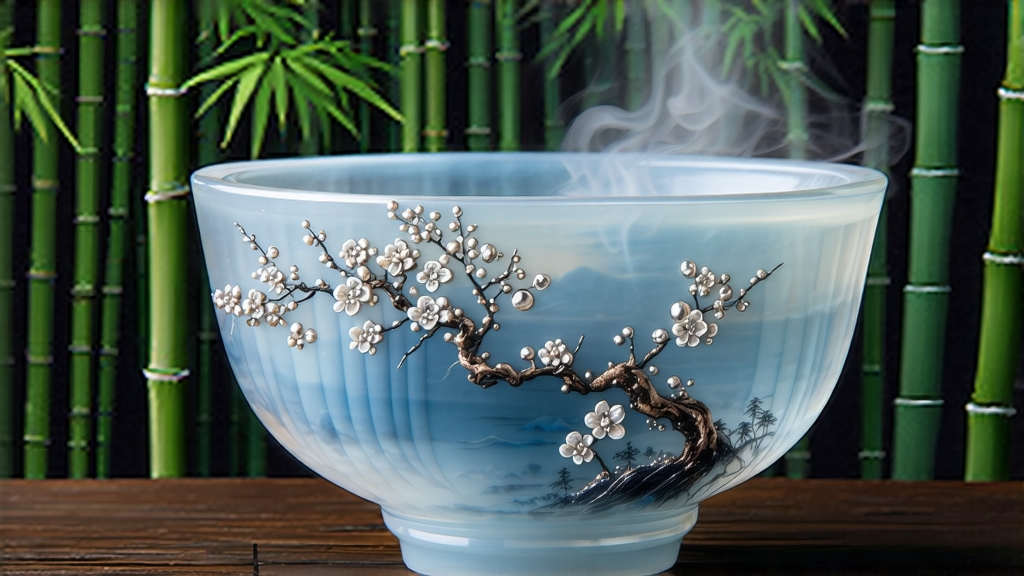
When Chinese tea lovers speak of “white tea,” they are not referring to a pale infusion alone, but to an entire philosophy of restraint. Among the six major tea families, white tea is the least disturbed by human hands, and within that family Silver Needle—Bai Hao Yin Zhen—stands as the most aristocratic. Its name translates literally to “White Hair Silver Needle,” a poetic reference to the silvery down that clothes every unopened bud. To understand this tea is to watch time, weather and human patience converge into a cup that smells of fresh hay, mountain sage and hidden honey.
Historical whispers
The first verifiable record of white tea appears in the Song Dynasty (960-1279), when Emperor Huizong praised “white buds from the Jian’an prefecture” in his Treatise on Tea. Yet those cakes of compressed white leaves were a far cry from today’s loose, needle-shaped buds. Modern Silver Needle emerged during the Qing, when export demand shifted from cake tea to elegant, light-oxidized styles appreciated by European courts. Fuding and Zhenghe—two counties in Fujian’s northeast—won imperial favor for their large, resinous Da Bai cultivars whose buds can reach three centimeters and still remain closed. By the late 1800s, Silver Needle was traveling down the Min River to Fuzhou’s foreign hongs, then onward to London, Amsterdam and St Petersburg, where it fetched prices higher than Keemun or Souchong.
Terroir and cultivar
Authentic Silver Needle is geographically tied to Fujian: either the coastal, granite-based hills of Fuding or the cooler, cloud-veiled interior of Zhenghe. Fuding’s sandy, slightly acidic soils stress the tea bushes, concentrating amino acids and giving a creamier liquor. Zhenghe’s higher altitude and diurnal swing yield a more mineral, bamboo-shoot freshness. Both counties rely chiefly on the Da Bai Hao (Big White Down) and the newer Xiao Bai (Small White) clonal selections, prized for fat, down-coated buds rich in L-theanine and protective leaf waxes. Attempts to produce “silver needle” in Yunnan, Guizhou or even Assam miss the subtle marine air and seasonal fog that season the bud with a saline lift impossible to imitate elsewhere.
The craft of doing almost nothing
White tea’s minimalism is deceptive. After dawn plucking—only standard-grade buds are taken between mid-March and early April, when two leaves and a bud are still tightly closed—farmers spread the harvest on large bamboo trays in a shaded, airy loft. No fixing, no rolling, no roasting: just withering. Yet this “just” demands constant micro-decisions. Ambient humidity must stay around 65 %; temperature should hover at 20-22 °C. Every forty minutes the buds are gently turned by hand so that moisture migrates evenly. If the sun emerges, trays are slid indoors to prevent abrupt enzyme destruction; if night dew thickens, charcoal fires miles away provide a whisper of warmth through flues beneath the floor. After thirty-six to forty-eight hours the buds have lost roughly 90 % of their moisture, yet retain 5–7 % internal water—enough to allow slow, non-enzymatic oxidation that rounds sharp edges. A final half-hour of “moonlight drying” is romantic lore rather than nightly practice, but many masters do rest the tea overnight in open courtyards under cool starlight, believing lunar yin energy seals fragrance. The finished tea is then sorted by eye: pure needle, broken needle, and “fish-leaf” (tiny unfolded leaves) are separated, ensuring that only straight, single buds enter the top grade.
Grades and commercial faces
Although Chinese national standards list only three white teas—Silver Needle, White Peony, and Shou Mei—connoisseurs subdivide Silver Needle into three unofficial tiers. “Imperial” consists entirely of Fuding Da Bai buds plucked before the Qingming festival; the down is dense, the aroma reminiscent of fresh melon rind. “Standard” blends slightly later buds from both Fuding and Zhenghe, still all-bud but with marginally thinner down. “Tribute” is a marketing term often seen online; it implies careful hand-sorting and charcoal finishing, yet lacks legal definition. Age is another variable. While green teas fade, well-stored Silver Needle softens and darkens, developing dates, dried longan and medicinal notes after five to seven years. Aged white teas have become speculative